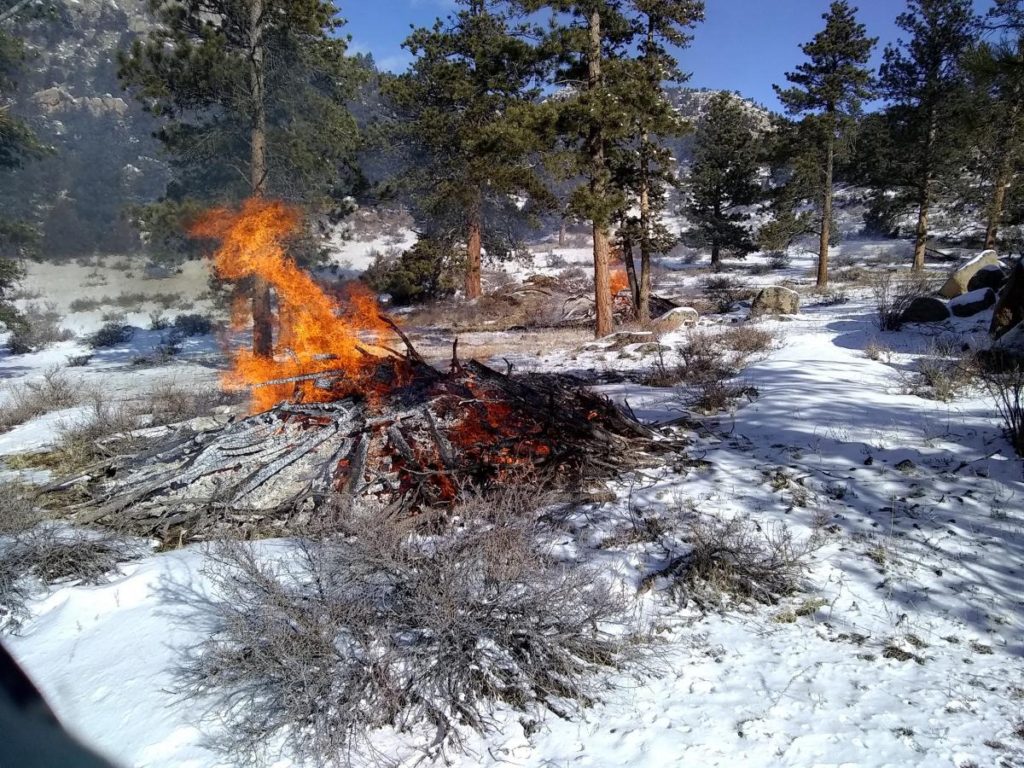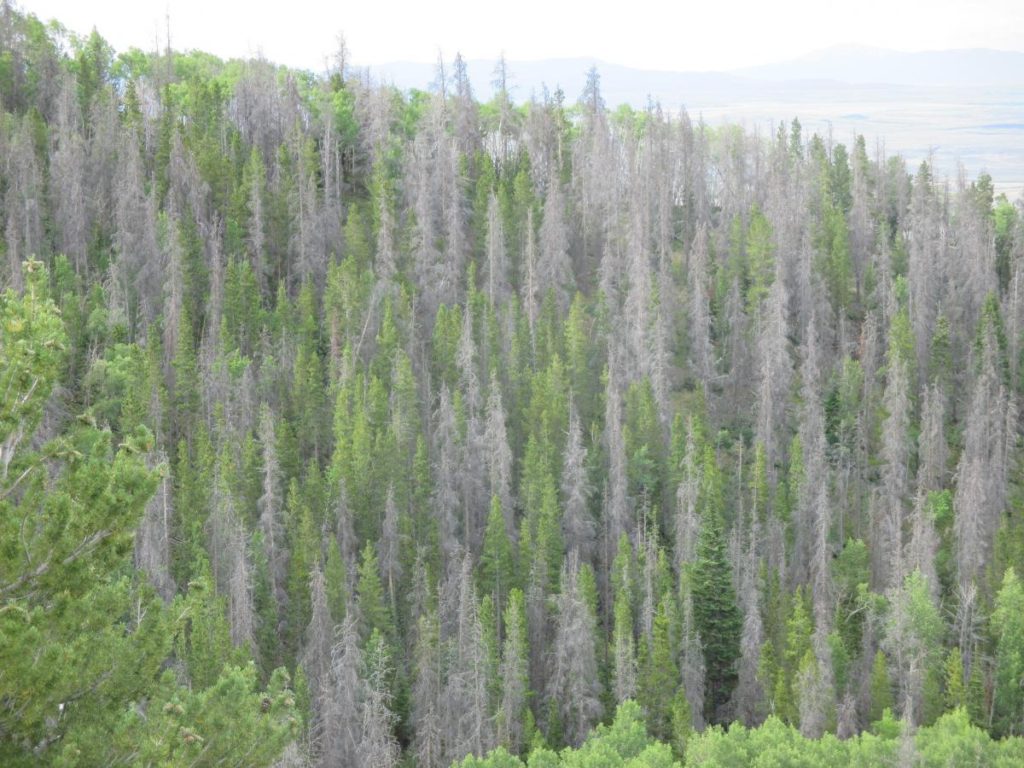
Is forest bioenergy really a climate change solution?
It’s -3°F, yet I’m roasting – nearly to the point of singeing my eyebrows!
As I watch pile after pile of wood burn, I think to myself – there must be a better use for this wood than simply burning it for disposal. Half of a tree’s biomass is carbon. The growing trees sucked this carbon out of the atmosphere over many decades and stored it. Now, it is returning to the atmosphere as each pile goes up in smoke. In a world working to address climate change by reducing atmospheric CO2 levels, there must be a better use for this wood.

Forest bioenergy refers to using woody materials for energy production. These uses range from burning wood for heat and electricity generation to converting wood into liquid fuel through a process called pyrolysis. Forest bioenergy is often considered carbon neutral, meaning it has net zero carbon emissions with any emissions being offset by the removal of CO2 from the atmosphere. If truly carbon neutral, forest bioenergy would hold a clear advantage over fossil fuels for battling climate change. The rationale for calling forest bioenergy carbon neutral, however, is somewhat misleading. The idea is that carbon released from burning wood for energy is recovered from the atmosphere when the forest regrows.
The reality is not that simple—forest bioenergy often emits more CO2 than fossil fuels. The carbon neutrality logic ignores the continued forest growth, and associated reductions in atmospheric CO2, if the forest were not harvested. It also does not account for the fossil fuel emissions released during harvesting, transportation, and conversion of wood to energy or fuel. Lastly, burning wood for energy releases a pulse of CO2 to the atmosphere— in the time between this pulse of CO2 and the much slower recapture of CO2 with forest regrowth, the CO2 is having a warming effect in the atmosphere.
Forest bioenergy’s carbon benefit (or lack of it) compared to fossil fuels depends on the particular forest of interest as well as the methods used to assess the carbon footprint. Is the forest being harvested solely for bioenergy, or are harvest by-products being used? Is the wood from a plantation or a natural forest? What is the source of the energy displaced by bioenergy? Replacing dirtier energy sources like coal is more likely to be beneficial than replacing cleaner energy sources. How quickly will your particular forest recover? This is an increasingly difficult question to answer with climate change effects on forest regeneration and growth. Furthermore, there are a variety of approaches to quantifying forest bioenergy’s carbon footprint—different approaches can give different answers.

Forest bioenergy influences climate in more ways than just changing atmospheric CO2 levels. For example, harvesting wood can change the reflectivity of the Earth’s surface or albedo. Harvested sites with seasonal snow cover reflect more of the Sun’s energy than do forested sites, having a cooling effect. This offsets some of the warming from the CO2 released to the atmosphere. The increase in Earth’s reflectivity after harvest plays less of a cooling role in the tropics because harvesting tropical forests also reduce cloud cover, which is highly reflective. Thus the difference in reflectivity between forested and harvested sites is reduced.
Forest bioenergy may be a sustainable alternative to fossil fuels in certain scenarios. For instance, the slash piles that were singeing my eyebrows could be put to good use. If we are burning wood simply to dispose of it, why not use it for bioenergy instead? In the northwest U.S., progress is being made to convert unused limbs and branches from logging operations to jet fuel. Alaska Airlines even flew across the country with a portion of the jet fuel made from this leftover material. Another potential bioenergy source lies in the vast number of trees killed by bark beetles throughout the western U.S. I am on a team researching the environmental, economic, and social sustainability of using this dead wood for forest bioenergy. The approach taken by this team highlights an important point. I’ve only touched on one aspect of the sustainability of forest bioenergy in this article—social and economic sustainability must also be considered.
Is forest bioenergy climate-friendly? It depends. This answer is difficult to build policy and industries around compared to the too-good-to-be-true blanket statement that forest bioenergy is carbon neutral. However, the many contingencies surrounding this issue must be considered if forest bioenergy is to actually contribute to the fight against climate change.